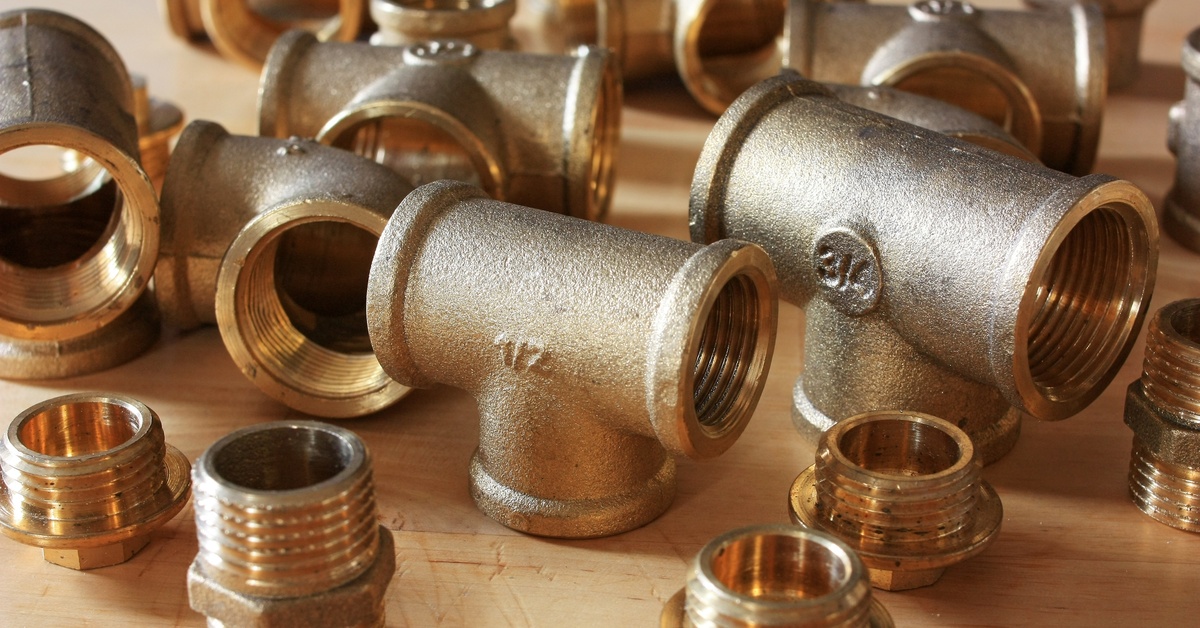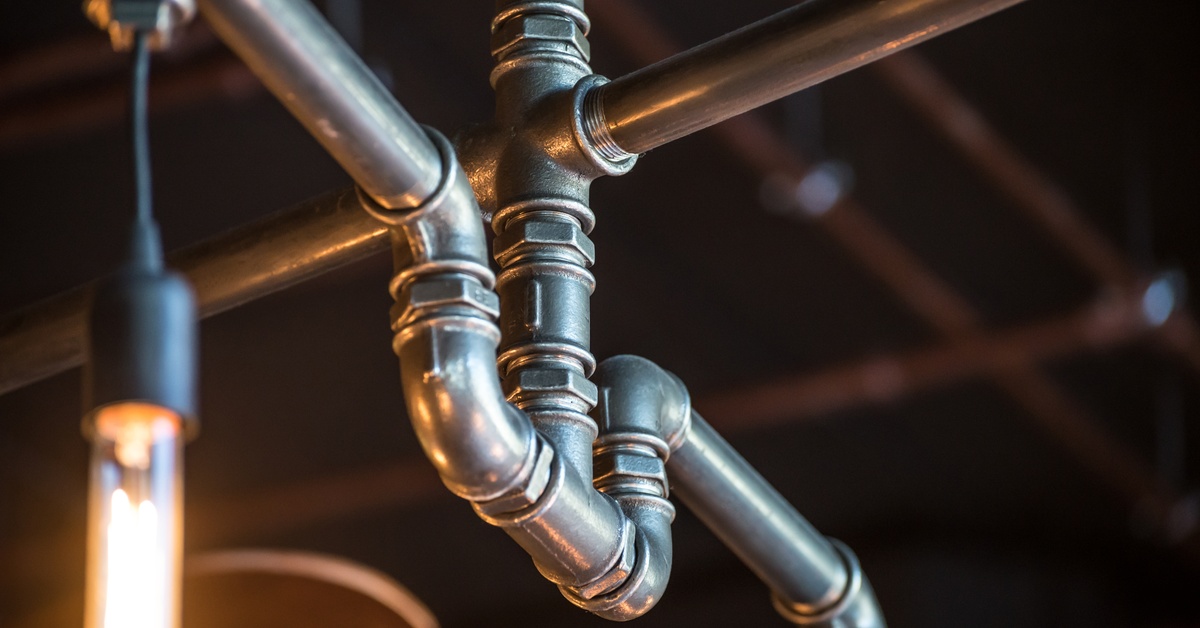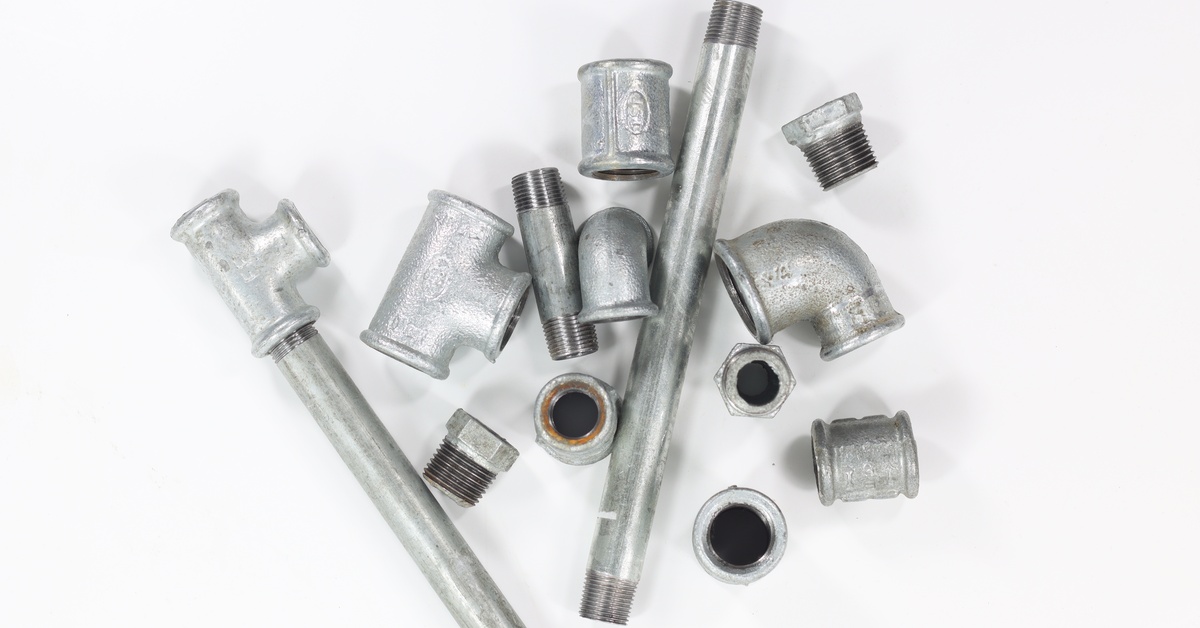
Author: Tyler Mashek
Pipe fittings are essential connections that ensure fluids get from one place to another. However, there is a vast variety of types with different materials and styles, each with its uses. Regardless of your industry, having the right fittings ensures smooth operations and less downtime. Use this guide to learn the materials, styles, and applications of various types of pipe fittings to make the best decisions for your business.
Pipe fittings can be separated into a handful of categories. Connection fittings are the most common and join two lengths of pipe. Redirection fittings allow you to change the flow’s direction, which is often necessary on a cramped rig or in an unpredictable site layout. Reduction fittings come into play when you’re moving between pipes of different diameters, helping maintain correct pressure and flow.
Termination fittings handle shutoff points, cleanouts, and any time you need to end a run securely without leaving an open path for leaks or contamination. Each type plays a crucial role in enhancing efficiency, durability, and safety in demanding jobs.

A pipe fitting’s material determines how your system handles stress, temperature, pressure, and corrosive substances. Contractors and operators must consider the compatibility of the fluids they carry and the working environment. Abrasive slurries, chemical exposures, and road vibrations all make a difference, and picking the wrong material can lead to cracks, leaks, or catastrophic failure.
Metal pipe fittings stand up to abuse and fluctuating conditions better than most alternatives. Steel fittings provide strength and resistance to wear, making them the go-to choice where pressure levels fluctuate or when handling heavy or abrasive loads.
Brass fittings offer reliable corrosion resistance and are suitable for use with potable water or certain chemicals, with the added benefit of being easy to thread and shape. Copper holds its place for jobs where heat resistance and antimicrobial properties matter such as home plumbing, but it’s less common on vacuum trucks due to its high price and softness. Overall, metals are popular for their longevity and rigidity in demanding fieldwork.
Plastic pipe fittings, including PVC, CPVC, and HDPE, meet the needs of lighter jobs and corrosive fluids at a lower price point. PVC is the standard for many wastewater and non-pressurized lines due to its simplicity and availability.
CPVC raises the temperature threshold, making it more dependable for use with hot water or in higher ambient temperatures during the summer months. HDPE works for rugged, flexible connections and handles movement or vibration better than more rigid materials. Plastic is lightweight, easy to cut, and cost-effective, but it cracks under mechanical stress or UV exposure.

A variety of styles for pipe fittings exist to accommodate the diverse requirements of fluid transport systems across various industries. Each application presents unique challenges, such as differing pressure ratings, flow rates, chemical compatibility, temperature tolerances, and space constraints.
For example, threaded fittings are ideal for smaller, low-pressure systems and allow for easy disassembly, while flanged fittings handle higher pressures and simplify maintenance in large-scale installations. This range ensures that systems maintain efficiency, safety, and durability under specific operational conditions.
Elbow fittings solve routing challenges by allowing a line to change direction. Standard bends of ninety degrees and forty-five degrees are common, but you’ll see custom angles on setups where space is tight or obstacles make straight runs impossible.
On vacuum trucks, elbows tend to get the most wear and tear as solids or debris slam into curves at high speed. Heavy-duty metals or abrasion-lined plastics are well suited for elbows in these cases.
When you need to combine the flows of multiple liquids from different sources, tees and cross fittings are the solution. Tee fittings can turn a single flow into two or merge two lines into one. They’re critical on trucks with compartmentalized tanks or complex pump systems. A well-placed tee fitting helps blend chemicals, redirect flow for cleaning, or isolate system segments during a partial load or emergency repair.
Cross fittings join four pipes together at a single point, usually in complex distribution or mixing applications. They’re less common on mobile rigs because of their bulk and risk leaks at multiple junctions, but they hold a place in stationary systems or multi-branch headers found in larger treatment plants or engineered sites.
Couplings join two pipes of the same diameter. They’re invaluable for extending lines or quick fixes after a pipe break. Some operators rely on threaded or glued couplings for permanent fixes, while others use compression or push-fit couplings for easy disconnects when lines need regular removal.
Whenever you need to step down or up in pipe size, a reducer fitting comes into play. They keep flow rates and system pressure within acceptable ranges, preventing clogging or pump strain. Vacuum trucks often use reducers when the onboard pump and intake hoses have different sizes. Reducers need to be tough since a sudden diameter change is a common place for turbulence and sludge buildup.
Caps and plugs close off a pipe’s open end. On any liquid waste operation, you’ll use these for system shutdown, maintenance, or safe transport. Durable caps prevent drips, odors, and contamination between jobs. Plugs are similar but typically fit into a pipe’s internal diameter instead of capping the outside.
Flanged fittings are strong and facilitate easy disassembly of connections that may need to be swapped out or inspected. They benefit higher-pressure systems or places where you want a secure join that will easily open with hand tools. Many industrial vacuum rigs use flanged connections on tank and pump interfaces for this reason.
Adapters help connect pipes that weren’t made for each other, bridging different thread patterns, sizes, or standards. Field repairs on older equipment or combining new components with legacy piping often require an adapter to avoid a full system redesign.
Since there are various materials, styles, and applications of pipe fittings, having the knowledge to use them appropriately improves project efficiency. Knowing the ins and outs of materials, connection styles, and use cases makes day-to-day work safer and more predictable.